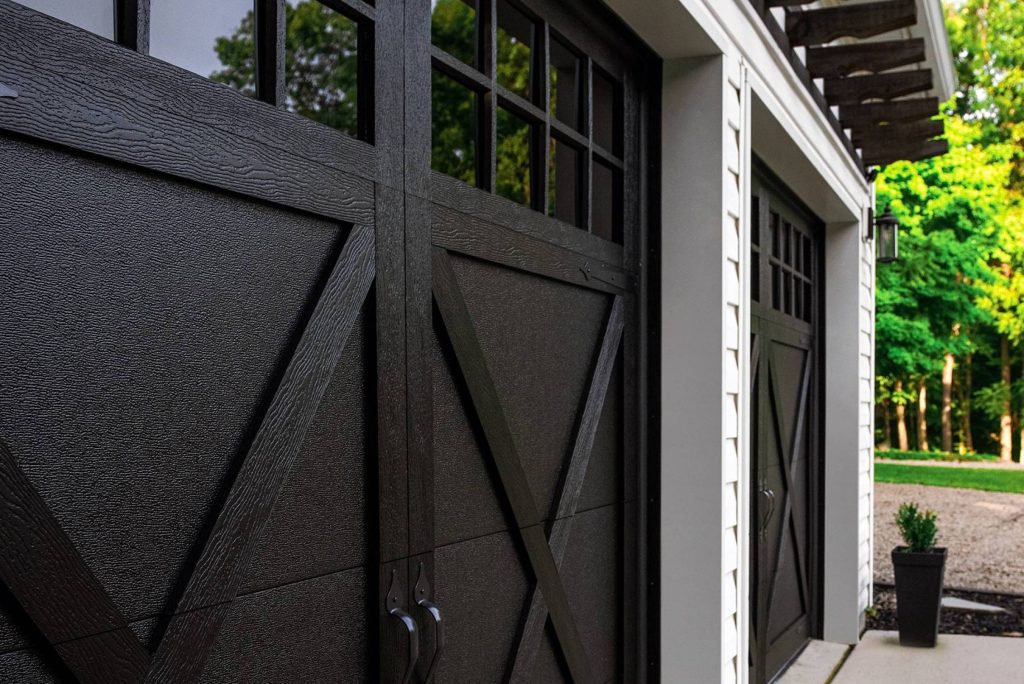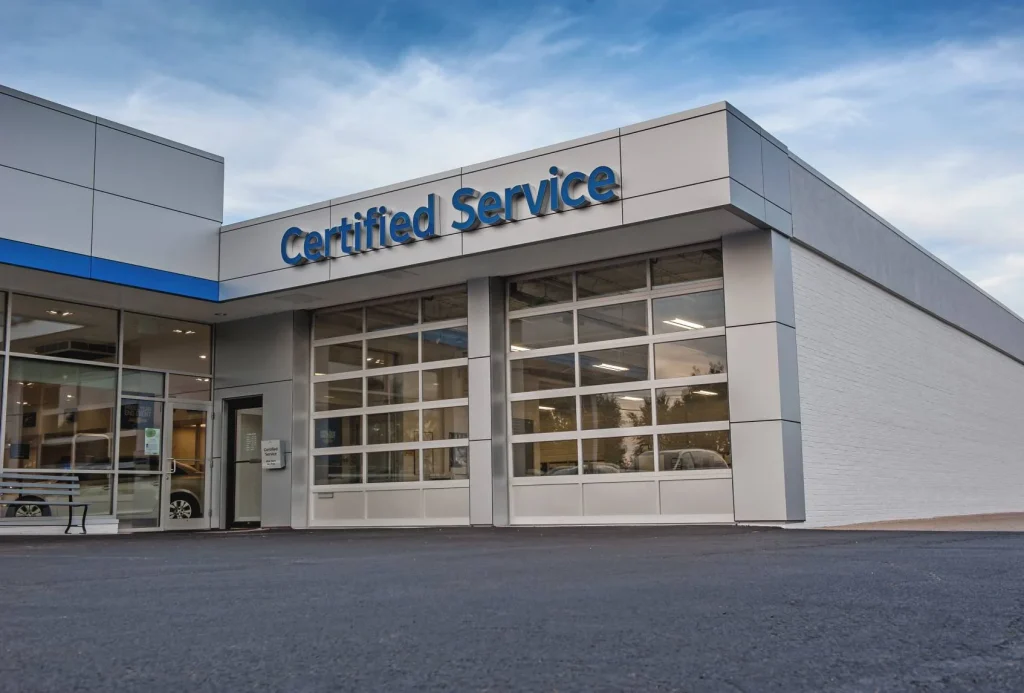Garage Door Spring in Roseville, MI
Heavy-Duty Springs for Smooth and Balanced Movement
Locally Based, Regionally Trusted
Since 2017
Schedule A Service Request
We Serve Businesses In And Around The Following Cities:
About Garage Door Springs
Comprehensive Guide to Garage Door Spring Services for Commercial Properties in Roseville
Understanding the Importance of Garage Door Springs in Commercial Properties
When discussing the efficiency and security of commercial properties in Roseville, few elements are as crucial as garage door springs. These components, though often overlooked, play an indispensable role in the operation of overhead doors, especially in busy commercial settings where reliability and functionality are paramount. By managing the door's weight and allowing for smooth opening and closing, garage door springs ensure that operations occur seamlessly and safely, without excessive strain on the mechanical components of the system.
In the world of commercial real estate, maintaining an efficient operational environment means ensuring that all infrastructural aspects are optimized. This includes acknowledging the importance of garage doors, particularly their springs. When garage door springs are compromised or fail, the ability to streamline deliveries or secure valuable assets is jeopardized, thus directly impacting productivity. As a result, addressing garage door spring maintenance, replacement, and optimization is essential for maintaining business efficiency.
The Different Types of Garage Door Springs
Commercial properties in Roseville typically utilize two primary types of garage door springs: torsion springs and extension springs. Understanding the distinctions between these types can empower business owners to make informed decisions when addressing their own door mechanisms.
Torsion springs, installed directly above the garage door, are more commonly employed in commercial applications due to their durability and strength. They operate by twisting and storing mechanical energy, which assists in lifting the door as it opens. The overhead door torsion spring is renowned for its robust nature and ability to handle the high frequency of usage typical in business environments. Despite their resilience, they do require regular inspections, as even the strongest materials can wear over time.
Conversely, extension springs are typically positioned alongside the door tracks. They expand and contract, providing the necessary tension to assist the door's operation. While they might not be the primary choice for commercial properties due to less longevity compared to torsion springs, they can still be found in certain settings where cost considerations and lower frequency of door usage make them a viable solution.
Both types of springs serve distinct purposes and have unique benefits, making it crucial for businesses to engage with knowledgeable service providers like D&J Contracting to select and maintain the appropriate spring system for their specific operational needs.
The Process of Changing Garage Door Springs
Replacing or fixing garage door springs in a commercial setting is not a task to be taken lightly. Proper execution requires specialized skills to ensure that safety and functionality are uncompromised during the transition. Understanding this process not only helps in supervising the quality of the work but also emphasizes the importance of professional intervention when dealing with such critical components.
The first step involves an in-depth examination of the current garage door setup. Technicians need to ascertain whether the springs are extension or torsion, and assess their overall wear and tear. This inspection is essential, as the nature of the damage will dictate the course of action—be it a simple adjustment or a complete replacement.
Upon determining the specifics, technicians must proceed with extreme caution, particularly in systems where a snapped spring is present. A spring snapped on a garage door can be incredibly hazardous, posing risks not only to the door mechanism but also to the safety of personnel handling the repairs. Before any removal, the door needs to be safely secured to prevent accidental operation, which could cause further damage or injury.
Installing new garage door springs involves precise calibration. Whether it is a change of torsion springs or dealing with extension spring garage doors, the proper tension settings are vital to ensure smooth operations. Inadequate adjustments can lead to premature wear or, worse, complete operational failures that undermine the purpose of the maintenance. Through expertise and precision, professionals can mitigate these risks, ensuring optimal door performance redesign.
Benefits of Regular Maintenance and Timely Replacement
The advantages of maintaining and replacing garage door springs in commercial settings extend beyond immediate operational benefits. Regular maintenance by experienced professionals like D&J Contracting can significantly reduce the likelihood of unexpected failures, which could otherwise lead to costly downtime.
In Roseville's bustling business environment, every second counts—unexpected mishaps due to neglected garage spring conditions can result in security vulnerabilities and delayed deliveries, affecting overall business profitability and reputation. Furthermore, regular inspections and timely replacements provide assurance that systems are operating within the safety parameters, protecting both employees and business assets.
The financial benefits cannot be understated either. While the cost of replacing garage door springs or fixing a secondary issue can initially seem substantial, the price to fix a garage door spring is often much more economical than the fallout from an unaddressed problem. Invested time and finances in proactive measures translate to long-term savings and sustained operational success.
Real-World Applications and Success Stories
Commercial enterprises across Roseville have reaped substantial benefits through the strategic management of their garage door systems. Examples abound, illustrating how businesses have optimized their operations by prioritizing their garage door mechanisms.
Consider a distribution company that experienced frequent shipment delays due to a malfunctioning spring in its garage door. By working with D&J Contracting, the firm addressed the issue by installing new garage door springs, significantly enhancing operation speed and reliability. This move not only improved productivity but also customer satisfaction and trust—key metrics for the company’s commercial success.
Another case involved a manufacturing facility facing issues with safety compliance due to improperly adjusted garage springs. A comprehensive assessment revealed the need for a complete overhaul of the garage door spring setup. Upon executing these changes and enacting a regular maintenance schedule, the facility saw a marked increase in operational safety and efficiency, demonstrating the profound impact of proper spring management in real-world applications.
These examples underscore the vital nature of garage door spring services in commercial property settings across Roseville, from ensuring uninterrupted operations to fostering secure environments. They also highlight why aligning with experienced professionals like D&J Contracting can transform challenges into opportunities for growth and stability.
Making Informed Decisions for Garage Spring Services
When it comes to selecting the right service provider for garage door springs, businesses must evaluate based on expertise, reliability, and the scope of their offerings. Service providers like D&J Contracting stand out due to their comprehensive understanding of commercial property needs and the technical prowess required to handle complex garage door systems.
As businesses navigate decisions about garage door components, understanding the garage door spring cost and potential investments is crucial. Businesses should consider not only the immediate price but also the long-term implications of these installations. This often requires a careful balance of upfront spending with anticipated savings on maintenance and operational efficiency.
Ultimately, the decision to engage with seasoned professionals results in a win-win scenario—businesses maintain their focus on core operations without the additional burden of door-related complications. The inclusion of expert services ensures that garage doors function seamlessly, allowing commercial properties to thrive in a competitive landscape.
In summary, the sophistication of garage door spring systems within commercial properties in Roseville cannot be overstated. By understanding the pivotal role these components play, and the need for proactive engagement with experts like D&J Contracting, businesses are ensuring their operations remain secure, efficient, and ready for future challenges. Whether you're facing a snapped spring or considering an upgrade, professional guidance and timely action are key to maintaining your business's operational edge.
Garage Door Springs Gallery



Call Us Today to receive your Free Quote for Garage Door Spring in Roseville
Serving: Roseville, Michigan

About Roseville, Michigan
The first permanent post office in the area was established in 1840 by William Rose who named it "Roseville" in honor of his father Dennison Rose, a veteran of the War of 1812.
The village of Roseville was incorporated in 1926, and the municipal building was constructed in 1929 at Gratiot Avenue and Meier Road. This replaced the Erin Township Building that was built near the corner of 11 Mile Road and Gratiot in 1886. The 1929 building housed administrative offices as well as the police and fire departments until the 1960s, when separate police and fire stations were constructed. City offices remained in the building until 1974.
Michigan's first commercial airport, Packard Field, opened at Gratiot Avenue and Frazho Road in 1919. It was renamed Gratiot Airport in 1929, and later Hartung Field. The Eastgate Shopping Center was constructed on the site in the 1950s.
The Erin-Roseville Library was established in 1936 in one room of the municipal building. The library moved to its own building in the 1960s and into the newly constructed civic center in 1974. In 2010, it was circulating approximately 250,000 items annually.
In 1958, the village and remaining parts of Erin Township were incorporated as the City of Roseville.
An early regional mall, the Macomb Mall, opened in 1964 and is still open today, located west of Gratiot and Masonic.
Roseville is in southern Macomb County, 14 miles (23 km) northeast of downtown Detroit. It is bordered to the east by St. Clair Shores, to the south by Eastpointe, to the west by Warren, and to the north by Fraser and Clinton Township. Mount Clemens, the Macomb county seat, is 7 miles (11 km) to the northeast.
According to the United States Census Bureau, Roseville has a total area of 9.86 square miles (25.54 km), of which 9.84 square miles (25.49 km) are land and 0.03 square miles (0.08 km), or 0.27%, are water.
 I-94 runs north–south, though still signed east- and westbound, along the eastern edge of the city. Between 10 and 12 Mile Roads, it forms the boundary between Roseville and St. Clair Shores.
I-94 runs north–south, though still signed east- and westbound, along the eastern edge of the city. Between 10 and 12 Mile Roads, it forms the boundary between Roseville and St. Clair Shores. I-696 (Walter P. Reuther Freeway) travels east and west through the middle of Roseville.
I-696 (Walter P. Reuther Freeway) travels east and west through the middle of Roseville. M-3 (Gratiot Avenue) (; named after engineer Charles Gratiot) runs northeast and southwest, and (roughly) bisects the city as it connects Detroit to Mount Clemens and points north.
M-3 (Gratiot Avenue) (; named after engineer Charles Gratiot) runs northeast and southwest, and (roughly) bisects the city as it connects Detroit to Mount Clemens and points north. M-97 (Groesbeck Highway), named for Governor Alex Groesbeck, is near the western edge of Roseville. It extends northeast from Detroit and is a high-speed and broad diagonal connector to northern Macomb County.
M-97 (Groesbeck Highway), named for Governor Alex Groesbeck, is near the western edge of Roseville. It extends northeast from Detroit and is a high-speed and broad diagonal connector to northern Macomb County.
- East–west travel is mainly on the mile roads; that is, 10 Mile Road on the south (Eastpointe, formerly known as East Detroit) border through 14 Mile Road on the north border.
- Utica Road is an important diagonal connector that crosses the city from southeast to northwest, starting at Martin Road, near Gratiot Avenue, and extending to the city's northern boundary at 13 Mile, then to Fraser, Clinton Township, Sterling Heights and Utica beyond.
| Census | Pop. | Note | %± |
|---|---|---|---|
| 1930 | 6,836 | — | |
| 1940 | 9,023 | 32.0% | |
| 1950 | 15,816 | 75.3% | |
| 1960 | 50,195 | 217.4% | |
| 1970 | 60,529 | 20.6% | |
| 1980 | 54,311 | −10.3% | |
| 1990 | 51,412 | −5.3% | |
| 2000 | 48,129 | −6.4% | |
| 2010 | 47,299 | −1.7% | |
| 2020 | 47,710 | 0.9% | |
| U.S. Decennial Census | |||
As of the census of 2010, there were 47,299 people, 19,553 households, and 12,055 families living in the city. The population density was 4,811.7 inhabitants per square mile (1,857.8/km). There were 21,260 housing units at an average density of 2,162.8 per square mile (835.1/km). The racial makeup of the city was 83.1% White, 11.8% African American, 0.4% Native American, 1.6% Asian, 0.4% from other races, and 2.6% from two or more races; 2% of the population was Hispanic or Latino of any race.
There were 19,553 households, of which 30.9% had children under the age of 18 living with them, 38.3% were married couples living together, 17.4% had a female householder with no husband present, 6.0% had a male householder with no wife present, and 38.3% were non-families. 31.7% of all households were made up of individuals, and 11.6% had someone living alone who was 65 years of age or older. The average household size was 2.41 and the average family size was 3.03.
The median age in the city was 37.9 years. 23% of residents were under the age of 18; 8.9% were between the ages of 18 and 24; 28.3% were from 25 to 44; 26.7% were from 45 to 64; and 13.1% were 65 years of age or older. The gender makeup of the city was 48.4% male and 51.6% female.
As of the census of 2000, there were 48,129 people, 19,976 households, and 12,724 families living in the city. The population density was 4,905.6 inhabitants per square mile (1,894.1/km). There were 20,519 housing units at an average density of 2,091.4 per square mile (807.5/km). The racial makeup of the city was 93.43% White, 2.60% African American, 0.42% Native American, 1.63% Asian, 0.03% Pacific Islander, 0.32% from other races, and 1.57% from two or more races; 1.5% of the population was Hispanic or Latino of any race.
Of the 19,976 households, 28.6% had children under the age of 18 living with them, 46.4% were married couples living together, 12.7% had a female householder with no husband present, and 36.3% were non-families. 30.8% of all households were made up of individuals, and 12.6% had someone living alone who was 65 years of age or older. The average household size was 2.40 and the average family size was 3.02.
In the city, the population was varied widely, with 23.1% under the age of 18, 8.2% from 18 to 24, 33.0% from 25 to 44, 20.2% from 45 to 64, and 15.4% who were 65 years of age or older. The median age was 36 years. For every 100 females, there were 93.8 males. For every 100 females age 18 and over, there were 90.1 males.
The median income for a household in the city was $41,220, and the median income for a family was $49,244. Males had a median income of $40,113 versus $26,281 for females. The per capita income for the city was $19,823. About 6.1% of families and 7.9% of the population were below the poverty line, including 9.9% of those under age 18 and 5.8% of those age 65 or over.
Roseville has a council-manager government. Voters elect the six council members, mayor, city clerk and treasurer for four-year terms. The terms are staggered so that only three council members are selected in odd-year general elections.
Roseville is located within the 39th Judicial District with the city of Fraser.
Public schools are operated by Roseville Community Schools and Fraser Public Schools. Roseville Community Schools operates seven elementary schools, two middle schools and one high school. Fraser Public Schools operates two elementary schools in the city.
The charter school Conner Creek Academy East is in the city.
St. Angela School of the Roman Catholic Archdiocese of Detroit operated from approximately 1954 until the 2010s.
